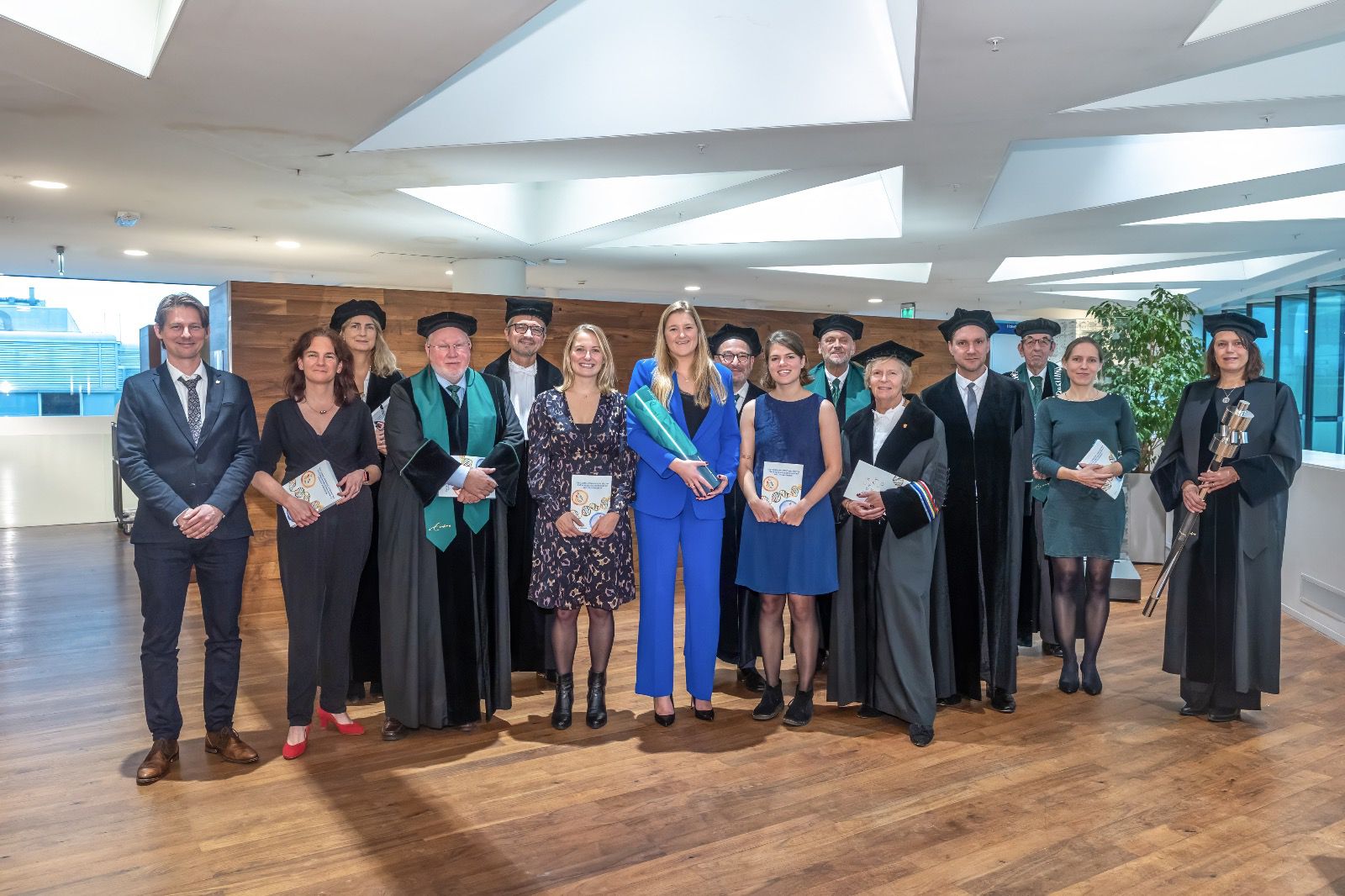PhD Defence Eline Bertrums

Tuesday our PhD student Eline Bertrums defended her thesis defence entitled: "The Clonal Dynamics underlying the genesis and regression of myeloid disorders", with cum laude.
All cells of the human body contain DNA, which is copied to the daughter cells during consecutive cell divisions. In this process, errors, or 'mutations' can occur. Some of these mutations are oncogenic driver mutations, i.e. cancer-causing mutations. With rising age more mutations are gained, hence older people are a higher risk to develop cancer. However, also children develop cancers, and some types of cancer even occur more often in children compared to young adolescents, such as leukemia. In this thesis, we studied the clonal evolution of different types of myeloid disease in children, including acute myeloid leukemia (AML), transient leukemia and therapy-related myeloid neoplasms (t-MN)
First, we aimed to better understand pediatric leukemia by studying leukemia in Down syndrome patients from a somatic evolutionary view. Down syndrome patients are prone to develop leukemia, and in the case of AML this is often preceded by transient leukemia at the neonatal age. This transient leukemia can, very rarely, also occur in non-Down syndrome neonates, and we studied this phenomenon by a large international collaboration to collect patient data. Using these data, together with a panel of experts, we developed a consensus guideline for clinicians to adequately diagnose and treat patients with neonatal myeloproliferative disease
Classification and thus treatment stratification of pediatric AML is mainly based on underlying genetic aberrations. We studied, in depth, a subset of pediatric AML with an adverse prognosis, namely NUP98-rearranged AML. Within this category, we found that the gene that is fused to the NUP98 gene in the translocation determines the characteristics of the disease. Also, we have identified a small subset of these patients with specific genetic aberrations that have a relatively better prognosis.
To trace back the origin of specific subtypes of pediatric AML with different fusion genes, we studied the DNA of single leukemic blasts and blood (stem) cells within the same patient by whole genome sequencing. Herewith, we could show that cells that look exactly like normal blood cells share the driver aberrations with the AML blasts. These aberrations in this specific patient subset were already present years before the AML diagnosis, which could mean that other, non-genetic, factors play a role in the expansion of leukemia.
Finally, we focused on therapy-related myeloid neoplasms (t-MN), occurring in children after they had been exposed to chemotherapy treatment for a first cancer or another disease. We could show that both leukemic blasts and normal blood stem cells have more mutations than age-matched individuals that were not exposed to chemotherapy. Furthermore, we showed different working mechanisms of chemotherapies, where some therapies (such as thiopurine) only affect cells that are dividing, and other therapies (such as cisplatin) affect all cells. In children, we found that chemotherapy can directly lead to driving mutations of t-MN. However, we observed that in children that had a germline mutation in TP53, the mechanism of t-MN development is more similar to that in adults, where the originating cell is already present before the start of chemotherapy.
Altogether, the here described research has provided new insights in the evolution of myeloid malignancies in children.


